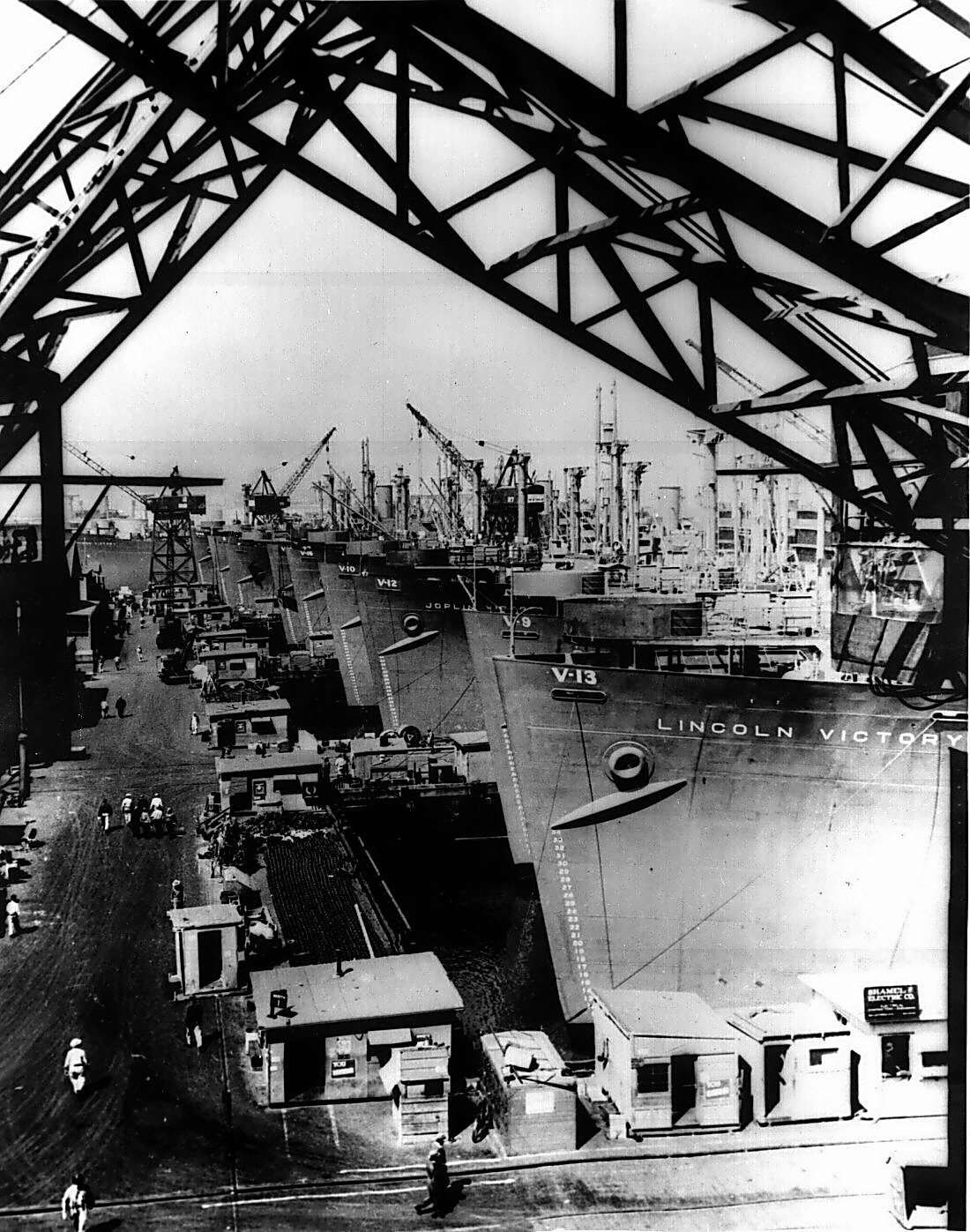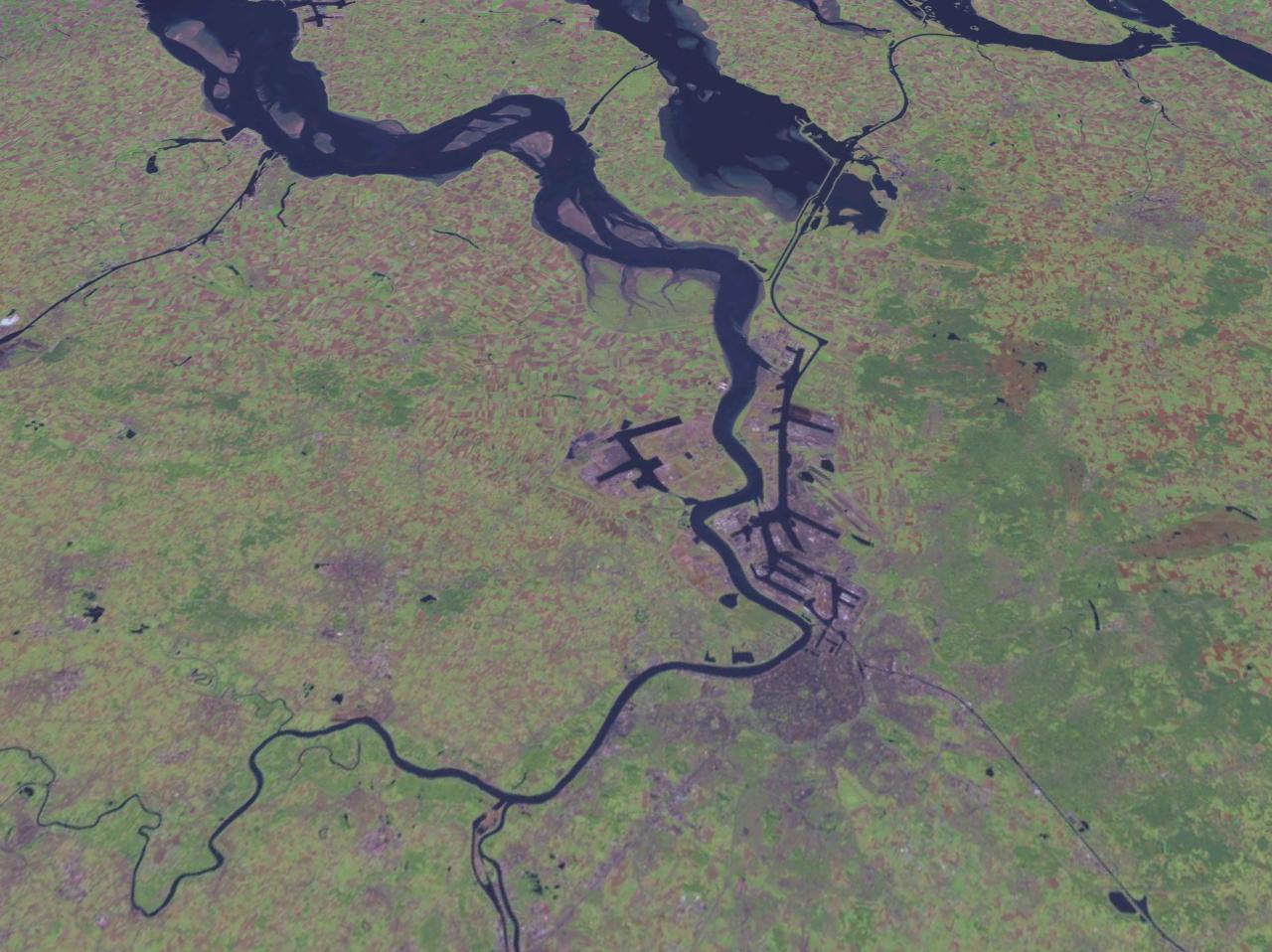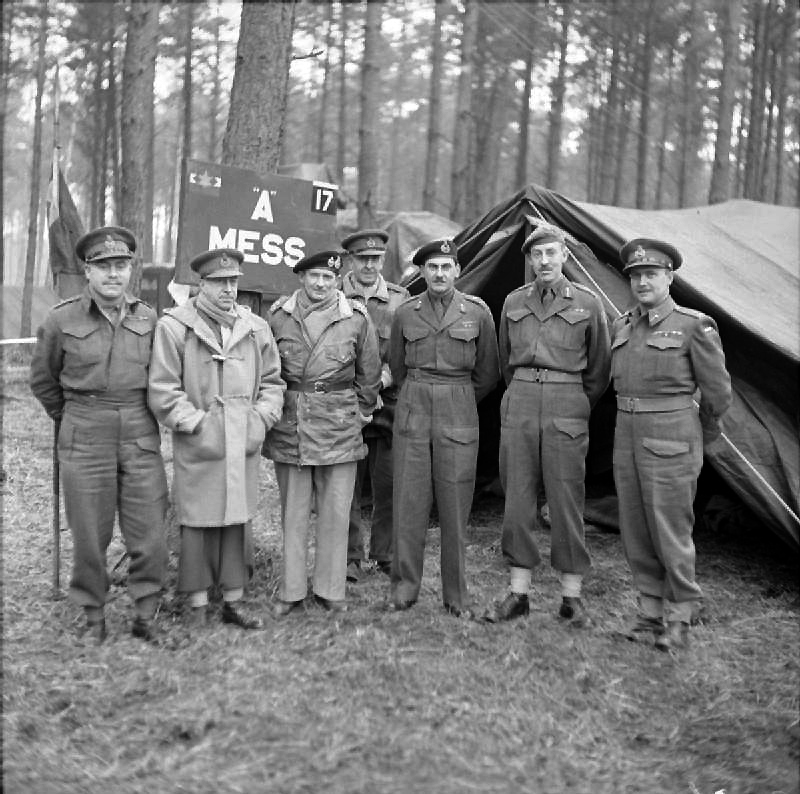|
Fort Cataraqui (ship)
SS ''Fort Cataraqui'' was a North Sands-type Fort ship. The North Sands type, along with similar Park, Fort, and Canadian Liberty classes were essentially British and Canadian variants of the American Liberty and Victory classes. ''Fort Cataraqui'' is notable for being the first Allied ship to enter the port of Antwerp after the Canadian First Army cleared the Scheldt Estuary during the Battle of the Scheldt in the Second World War. The vessel was built by Davie Shipbuilding & Repair Company, in Lauzon, Quebec and was delivered in October 1942. ''Fort Cataraqui'' survived the war and was broken up in 1960 in Mobile, Alabama. During World War II, 28 were lost to enemy action, and four were lost due to accidents. Many of the surviving 166 ships passed to the United States Maritime Commission. The last recorded scrapping was in 1985, and two ships, the former and , were listed on Lloyd's Register Lloyd's Register Group Limited (LR) is a technical and professional services orga ... [...More Info...] [...Related Items...] OR: [Wikipedia] [Google] [Baidu] |
Davie Shipbuilding
Davie Shipbuilding is a historic shipbuilding company located in Lauzon, Quebec, Canada. The facility is now operating as Chantier Davie Canada Inc. and is the oldest continually operating shipbuilder in North America. History The Davie shipyard in Lauzon, Quebec has a complex ownership history. 19th century The Davie firm was founded in 1825 by English-born ship captain Allison Davie (May 4, 1796 – June 1836) and English born shipbuilder George Taylor (1782-1861); the Davie construction record, however, only dates to 1897. The Davie company was established in the 1830s on the south shore of the St. Lawrence River across from Quebec City in the community of Lauzon, Quebec (now part of the city of Levis, Quebec). Davie's father-in-law, George Taylor, had begun a shipbuilding business in 1811 after his arrival from England on the southwest shores of Île d’Orléans at Trou St. Patrice (closed briefly 1812 due to the War of 1812 to build ships in Upper Canada and permanently ... [...More Info...] [...Related Items...] OR: [Wikipedia] [Google] [Baidu] |
Fort Ship
The Fort ships were a class of 198 cargo ships built in Canada during World War II for use by the United Kingdom under the Lend-Lease scheme. They all had names prefixed with "Fort" when built. The ships were in service between 1942 and 1985, with two still listed on shipping registers until 1992. A total of 53 were lost during the war due to accidents or enemy action. One of these, , was destroyed in 1944 by the detonation of 1,400 tons of explosive on board her. This event, known as the Bombay Explosion, killed over 800 people and sank thirteen ships. Fort ships were ships transferred to the British Government and the Park ships were those employed by the Canadian Government, both had the similar design. Description The Fort ships were long with a beam of . They were assessed at . The ships were of three types, the "North Sands" type, which were of riveted construction, and the "Canadian" and "Victory" types, which were of welded construction. They were built by eighteen di ... [...More Info...] [...Related Items...] OR: [Wikipedia] [Google] [Baidu] |
Park Ship
Park ships were merchant steamships constructed for Canada’s Merchant Navy during the Second World War. Park ships and Fort ships (built in Canada for operation by the British) were the Canadian equivalent of the American Liberty ships. All three shared a similar design by J.L. Thompson and Sons of Sunderland, England. Fort ships had a triple expansion steam engine and a single screw propeller. Fort ships were ships transferred to the British government and the Park ships were those employed by the Canadian government, both had the similar design. Park ships were named after local and National Parks of Canada. A few Park ships were launched as "Camp ships", named after Canada military camps, but were quickly renamed after Parks. was the first Park ship lost to enemy attack, in the Indian Ocean after a torpedo attack from U-177 in the Indian Ocean, South of Durban, South Africa. Park Steamship Company The Allied merchant fleet suffered significant losses in the early y ... [...More Info...] [...Related Items...] OR: [Wikipedia] [Google] [Baidu] |
Liberty Ship
Liberty ships were a class of cargo ship built in the United States during World War II under the Emergency Shipbuilding Program. Though British in concept, the design was adopted by the United States for its simple, low-cost construction. Mass-produced on an unprecedented scale, the Liberty ship came to symbolize U.S. wartime industrial output. The class was developed to meet British orders for transports to replace ships that had been lost. Eighteen American shipyards built 2,710 Liberty ships between 1941 and 1945 (an average of three ships every two days), easily the largest number of ships ever produced to a single design. Their production mirrored (albeit on a much larger scale) the manufacture of "Hog Islander" and similar standardized ship types during World War I. The immensity of the effort, the number of ships built, the role of female workers in their construction, and the survival of some far longer than their original five-year design life combine to make them th ... [...More Info...] [...Related Items...] OR: [Wikipedia] [Google] [Baidu] |
Victory Ship
The Victory ship was a class of cargo ship produced in large numbers by North American shipyards during World War II to replace losses caused by German submarines. They were a more modern design compared to the earlier Liberty ship, were slightly larger and had more powerful steam turbine engines giving higher speed to allow participation in high speed convoys and make them more difficult targets for German U-boats. A total of 531 Victory ships were built in between 1944 and 1946. VC2 design One of the first acts of the United States War Shipping Administration upon its formation in February 1942 was to commission the design of what came to be known as the Victory class. Initially designated EC2-S-AP1, where EC2 = Emergency Cargo, type 2 (Load Waterline Length between ), S = steam propulsion with AP1 = one aft propeller (EC2-S-C1 had been the designation of the Liberty ship design), it was changed to VC2-S-AP1 before the name "Victory Ship" was officially adopted on 28 Apr ... [...More Info...] [...Related Items...] OR: [Wikipedia] [Google] [Baidu] |
Allies Of World War II
The Allies, formally referred to as the United Nations from 1942, were an international military coalition formed during the Second World War (1939–1945) to oppose the Axis powers, led by Nazi Germany, Imperial Japan, and Fascist Italy. Its principal members by 1941 were the United Kingdom, United States, Soviet Union, and China. Membership in the Allies varied during the course of the war. When the conflict broke out on 1 September 1939, the Allied coalition consisted of the United Kingdom, France, and Poland, as well as their respective dependencies, such as British India. They were soon joined by the independent dominions of the British Commonwealth: Canada, Australia, New Zealand and South Africa. Consequently, the initial alliance resembled that of the First World War. As Axis forces began invading northern Europe and the Balkans, the Allies added the Netherlands, Belgium, Norway, Greece, and Yugoslavia. The Soviet Union, which initially had a nonaggression pa ... [...More Info...] [...Related Items...] OR: [Wikipedia] [Google] [Baidu] |
Port Of Antwerp
The Port of Antwerp-Bruges is the port of the City of Antwerp. It is located in Flanders (Belgium), mainly in the province of Antwerp but also partially in the province of East Flanders. It is a seaport in the heart of Europe accessible to capesize ships. It is Europe’s second-largest seaport, after Rotterdam. Antwerp stands at the upper end of the tidal estuary of the Scheldt. The estuary is navigable by ships of more than 100,000 Gross Tons as far as 80 km inland. Like the Port of Hamburg, the Port of Antwerp's inland location provides a more central location in Europe than the majority of North Sea ports. Antwerp's docks are connected to the hinterland by rail, road, and river and canal waterways. As a result, the port of Antwerp has become one of Europe's largest seaports, ranking second behind Rotterdam by total freight shipped. Its international rankings vary from 11th to 20th ( AAPA). In 2012, the Port of Antwerp handled 14,220 sea trade ships (190.8 million ... [...More Info...] [...Related Items...] OR: [Wikipedia] [Google] [Baidu] |
Canadian First Army
The First Canadian Army (french: 1reArmée canadienne) was a field army and a formation of the Canadian Army in World War II in which most Canadian elements serving in North-West Europe were assigned. It served on the Western Front from July 1944 until May 1945. The army was formed in early 1942, replacing the existing unnumbered Canadian Corps, as the growing contribution of Canadian forces to serve with the British Army in the United Kingdom necessitated an expansion to two corps. By the end of 1943 Canadian formations consisted of three infantry divisions, two armoured divisions and two independent armoured brigades. The first commander was Lieutenant-General A. G. L. "Andy" McNaughton, who was replaced in 1944 by General H. D. G. "Harry" Crerar. Both had been senior Royal Regiment of Canadian Artillery officers in the Canadian Corps in the Great War. Allied formations of other nationalities were added to the First Canadian Army to keep it at full strength.Harris, Stephen"Fir ... [...More Info...] [...Related Items...] OR: [Wikipedia] [Google] [Baidu] |
Scheldt Estuary
The Scheldt (french: Escaut ; nl, Schelde ) is a river that flows through northern France, western Belgium, and the southwestern part of the Netherlands, with its mouth at the North Sea. Its name is derived from an adjective corresponding to Old English ' ("shallow"), Modern English ''shoal'', Low German ''schol'', West Frisian ''skol'', and Swedish (obsolete) ''skäll'' ("thin"). Course The headwaters of the Scheldt are in Gouy, in the Aisne department of northern France. It flows north through Cambrai and Valenciennes, and enters Belgium near Tournai. Ghent developed at the confluence of the Lys, one of its main tributaries, and the Scheldt, which then turns east. Near Antwerp, the largest city on its banks, the Scheldt flows west into the Netherlands toward the North Sea. Originally there were two branches from that point: the Oosterschelde (Eastern Scheldt); and the Westerschelde (Western Scheldt). In the 19th century, however, the Dutch built a dyke that cuts the r ... [...More Info...] [...Related Items...] OR: [Wikipedia] [Google] [Baidu] |
Battle Of The Scheldt
The Battle of the Scheldt in World War II was a series of military operations led by the First Canadian Army, with Polish and British units attached, to open up the shipping route to Antwerp so that its port could be used to supply the Allies in north-west Europe. Under acting command of the First Canadian's Lieutenant-General Guy Simonds, the battle took place in northern Belgium and southwestern Netherlands from 2 October to 8 November 1944. The Canadians had been delayed, and pressure on the Scheldt left wanting, by Allied decisions to focus on Arnhem ( Operation Market Garden), Boulogne (Operation Wellhit), Calais (Operation Undergo) and Dunkirk. By the time the Canadians were sent into the Battle of the Scheldt, the Wehrmacht defenders had been reinforced. The Germans staged an effective delaying action, during which they flooded land areas in the Scheldt estuary, slowing the Allied advance. After five weeks of difficult fighting, the Canadian First Army, at a cost of 12, ... [...More Info...] [...Related Items...] OR: [Wikipedia] [Google] [Baidu] |
Second World War
World War II or the Second World War, often abbreviated as WWII or WW2, was a world war that lasted from 1939 to 1945. It involved the vast majority of the world's countries—including all of the great powers—forming two opposing military alliances: the Allies and the Axis powers. World War II was a total war that directly involved more than 100 million personnel from more than 30 countries. The major participants in the war threw their entire economic, industrial, and scientific capabilities behind the war effort, blurring the distinction between civilian and military resources. Aircraft played a major role in the conflict, enabling the strategic bombing of population centres and deploying the only two nuclear weapons ever used in war. World War II was by far the deadliest conflict in human history; it resulted in 70 to 85 million fatalities, mostly among civilians. Tens of millions died due to genocides (including the Holocaust), starvation, ma ... [...More Info...] [...Related Items...] OR: [Wikipedia] [Google] [Baidu] |
Lauzon, Quebec
Lauzon is a former city in southern Quebec, Canada, located on the St. Lawrence River northeast of Lévis. Founded in 1867 as a village it became a town in 1910, Lauzon had a population of about 14,500 when it merged with Lévis in 1989. The then-amalgamated city had the name of Lévis-Lauzon for about one year in 1991, before merging again and changing its name for good to Lévis. History In 1867, Lauzon was named for Jean de Lauzon, Governor of New France from 1651 to 1656. The area was once part of the Seignory of Lauzon creating in 1636 and later named St-Joseph-de-la-Pointe-Lévy''. Economy One of Lauzon's former largest employers was a shipyard operated by Davie Shipbuilding. Davie's Champlain dry dock is currently the largest in Canada. The Davie Shipyard is now home to Chantier Davie Canada Incorporated. Other employers include: * Cimetière Mont-Marie - opened in 1888 * FritoLay Canada * Galeries du Vieux-Fort - shopping mall with 40 stores * Multi-Marques Master Ba ... [...More Info...] [...Related Items...] OR: [Wikipedia] [Google] [Baidu] |






